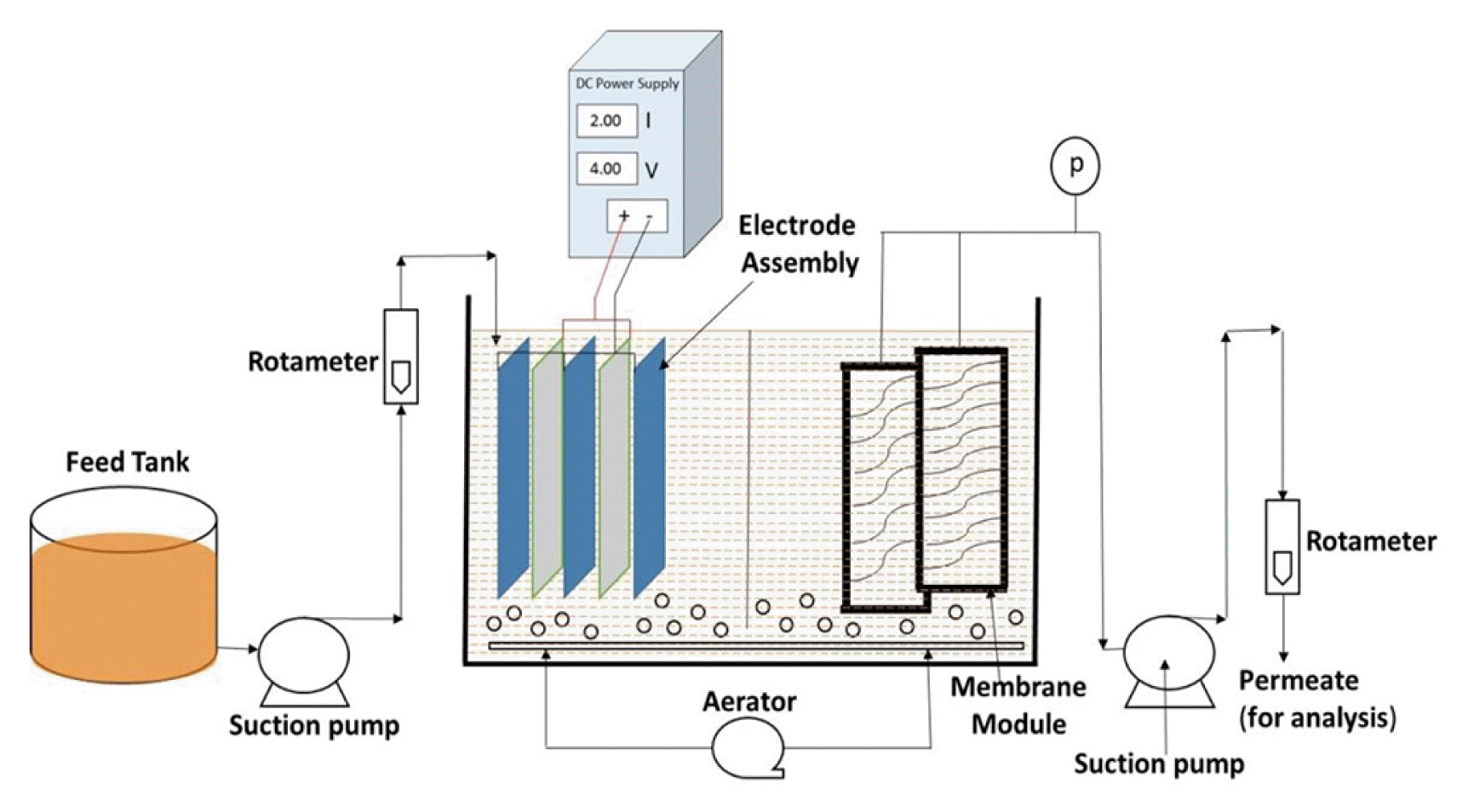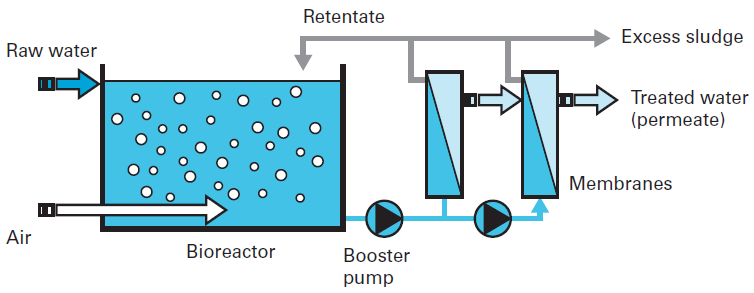Membrane Bioreactors Described: Efficient Solutions for Clean Water
Membrane bioreactors (MBRs) have emerged as an innovative solution for attending to the pushing challenges of wastewater therapy. By incorporating organic processes with sophisticated membrane layer purification, MBRs not just enhance the top quality of cured water yet also lower the spatial requirements of treatment facilities. As ecological worries magnify, the duty of MBR technology in promoting lasting water management comes to be increasingly significant. Nonetheless, the intricacies of their operation, advantages, and potential applications warrant a closer examination to fully understand their effect on the future of water therapy.

What Are Membrane Bioreactors?
Membrane bioreactors (MBRs) are innovative wastewater therapy systems that integrate organic degradation procedures with membrane purification technology. This assimilation enables for the effective removal of contaminants from water, making MBRs a recommended option in various applications, consisting of municipal wastewater therapy and industrial effluent monitoring.

Among the vital advantages of MBRs is their capacity to create top quality effluent, frequently ideal for reuse in irrigation or commercial processes. In addition, MBRs need a smaller footprint contrasted to traditional therapy systems, making them ideal for city settings where room may be restricted.
Furthermore, MBRs can properly manage differing influent loads and are much less susceptible to the impacts of toxic shocks. These attributes add to their growing appeal as a sustainable service for resolving the enhancing need for tidy water while reducing ecological influences.
Exactly How Membrane Layer Bioreactors Job
While the operation of membrane bioreactors (MBRs) might appear complex, it essentially focuses on the harmony between organic procedures and membrane purification. MBRs incorporate a biological treatment process, generally turned on sludge, with a membrane layer splitting up system to deal with wastewater successfully.
In an MBR system, wastewater is first introduced right into a bioreactor where bacteria break down raw material and various other pollutants. The biological activity decreases the focus of pollutants while promoting the development of biomass. Following this organic treatment, the mixed alcohol is subjected to membrane purification, which can be microfiltration or ultrafiltration, depending on the desired effluent quality.
The membranes work as a physical barrier, allowing water and tiny solutes to pass while preserving suspended solids and larger molecules. This enables the system to keep a high focus of biomass within the reactor, enhancing the therapy performance.
In addition, the continuous separation of treated water from the biomass facilitates a portable design and reduces the footprint of the therapy center. Generally, the mix of biological degradation and membrane layer purification in MBRs results in reliable and dependable wastewater treatment, ensuring high-quality effluent suitable for numerous applications.
Benefits of MBR Modern Technology
One of the key benefits of membrane layer bioreactor (MBR) innovation is its ability to generate high-grade effluent with a significantly reduced impact compared to standard wastewater therapy techniques. MBR systems effectively incorporate biological therapy and membrane layer filtering, causing remarkable elimination of impurities, consisting of put on hold solids, virus, and organic matter. This capacity results in effluent that often satisfies or surpasses strict governing standards for reuse and discharge.
In addition, MBR modern technology permits for higher biomass concentrations, which improves the therapy efficiency and minimizes the called for reactor volume. This small layout is particularly useful in city areas where area is limited. The operational versatility of MBR systems likewise means see page they can adapt to varying influent top qualities and flow rates, making them appropriate for a vast array of applications.
Additionally, the minimized sludge manufacturing connected with MBR processes adds to lower functional and maintenance expenses. The membrane layers work as navigate to this website a physical barrier, lessening the risk of clogging and allowing longer operational durations in between cleaning. In general, the advantages of MBR innovation make it an attractive service for sustainable wastewater treatment, dealing with both ecological concerns and the need for efficient resource monitoring.
Applications of Membrane Bioreactors
With their flexibility and performance, membrane layer bioreactors (MBRs) locate applications throughout numerous fields, including community wastewater treatment, industrial processes, and even water improvement. In community settings, MBRs provide a portable option for dealing with wastewater, successfully eliminating pollutants while all at once producing top quality effluent that meets stringent regulatory standards. This makes them particularly ideal for locations with restricted area.
In industrial applications, MBR technology is made use of for treating process water, particularly in sectors such as food and drink, pharmaceuticals, and petrochemicals. These industries gain from MBRs' capacity to manage high organic lots and their effectiveness in recouping important resources from wastewater, such as nutrients and water.
In addition, MBRs play a critical duty in water improvement efforts, allowing the reuse of dealt with wastewater for irrigation, commercial processes, or perhaps as safe and clean water after additional therapy (Membrane Bioreactor). Their effectiveness in removing pollutants and microorganisms makes them a trustworthy selection pop over to this web-site for making sure water quality in different reuse applications
Future of Water Therapy Solutions
The future of water therapy solutions is positioned for transformative advancements driven by technical advancement and enhancing ecological awareness. As worldwide water scarcity becomes a pressing concern, new techniques, consisting of membrane bioreactor (MBR) systems, are set to play a crucial role in boosting the effectiveness and sustainability of water therapy processes.
Emerging technologies such as fabricated intelligence and artificial intelligence are expected to maximize therapy operations, permitting real-time monitoring and anticipating maintenance. This will enhance the total integrity and effectiveness of water treatment facilities. In addition, improvements in membrane materials, such as graphene and nanofiltration, promise to boost permeation prices and decrease fouling, causing reduced energy usage and operational expenses.
In addition, the assimilation of eco-friendly power resources into water treatment plants will add to greener practices. The circular economic climate design will additionally get traction, encouraging the recuperation of useful resources from wastewater, such as nutrients and energy.
Conclusion

Membrane bioreactors (MBRs) have actually emerged as a sophisticated remedy for attending to the pressing difficulties of wastewater therapy. By incorporating organic processes with sophisticated membrane purification, MBRs not just improve the quality of cured water however also minimize the spatial requirements of treatment facilities.One of the crucial benefits of membrane bioreactor (MBR) modern technology is its ability to generate premium effluent with a considerably minimized footprint contrasted to traditional wastewater therapy methods.With their convenience and efficiency, membrane bioreactors (MBRs) discover applications throughout various markets, consisting of municipal wastewater therapy, commercial processes, and even water recovery.In conclusion, membrane bioreactors represent a substantial improvement in wastewater therapy technology, integrating biological procedures with efficient membrane filtering to generate high-quality effluent.